![]()
![]()
![]() Let’s take a journey through Azerbaijan, where your taste buds lead the way. In the heart of the Caucasus, this gem offers a culinary adventure with every bite. From mouth watering kebabs to fragrant pilafs, Azerbaijani cuisine is a fusion of flavors that has been shaped by its cultural heritage. As a self-proclaimed foodie, I’m excited to present this Foodie’s guide to the must-try dishes and desserts. So, get ready to savor the taste of Azerbaijan—your taste buds are in for a treat! With its diverse food culture reflecting its history of the being part of the Silk Road through trade and cultural exchange, Azerbaijan’s culinary scene is as vibrant as it is delicious. Let’s dive in!
Let’s take a journey through Azerbaijan, where your taste buds lead the way. In the heart of the Caucasus, this gem offers a culinary adventure with every bite. From mouth watering kebabs to fragrant pilafs, Azerbaijani cuisine is a fusion of flavors that has been shaped by its cultural heritage. As a self-proclaimed foodie, I’m excited to present this Foodie’s guide to the must-try dishes and desserts. So, get ready to savor the taste of Azerbaijan—your taste buds are in for a treat! With its diverse food culture reflecting its history of the being part of the Silk Road through trade and cultural exchange, Azerbaijan’s culinary scene is as vibrant as it is delicious. Let’s dive in!

The Influence of the Caucasus Region
If you were to Google which continent Azerbaijan is on – you’ll realise that it belongs to both Europe and Asia. Geographically, it’s a transcontinental country. It is also heavily influenced by being a part of the Silk Road, trade and cultural exchange flowed through the country. The influence from being at the crossroads of Europe and Asia can be seen through their cuisine. Its a melting pot of Persia, Turkey, Russia, and further east Asia. Through the trade, saffron and dried fruits are used – a symbol of Persian influence. Turkish kebabs, in a form called shashlik have an Azerbaijani twist. If you’ve travelled or tried Middle Eastern cuisine, you’ll notice that some dishes are familiar. Similarly, if you’ve visited Uzbekistan, you’ll see the parallels of cuisine which are attributed to the influence of the Silk Road.
Staples of Azerbaijan’s Cuisine
Local Breads and Cheeses
Our journey takes us to the most important meal of the day (so we’ve been told) – Breakfast. We opted for the “local” breakfast menu at the cafe. It was a spread of local cheese, fresh vegetables, local breads and jam/honey. My first impression of the food was the freshness and use of local produce. Throughout our time in Azerbaijan, its cuisine brims with fruits, vegetables and fragrant herbs that form the backbone. As you wander through the streets, the aroma of freshly baked bread and sizzling meat skewers fills the air. It’s impossible to resist trying everything.
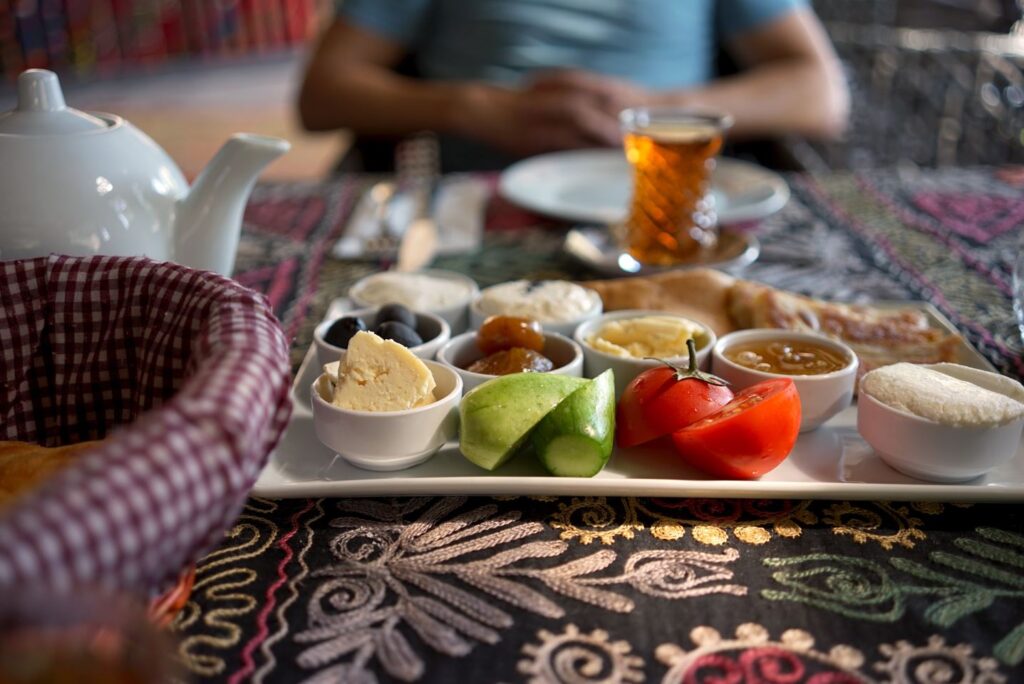
Azerbaijan’s local breads and cheeses are integral to its culinary landscape, offering a comforting and delicious taste of tradition. Bread is a staple at every meal, often baked fresh daily. Tandoor-baked bread, with its crispy crust and soft interior, is a particular favorite. Another popular variety is “lavash,” a thin, soft flatbread that pairs perfectly with various dishes. The country also boasts a rich selection of cheeses, each with its own unique flavor and texture. “Motal” cheese, made from sheep’s milk and aged in a goat’s skin, has a tangy, robust flavor that’s perfect for cheese lovers.
Plov, a true Azerbaijan Staple
Plov, also known as pilaf or pilau, is one of the staples of Azerbaijani cuisine. It is a definite must-try for any visitor. Like each country in the region, there are different ingredients and cooking methods unique to each location. Like most plov basics, it typically consists of rice, meat (usually lamb, beef, or chicken), and vegetables (onions, carrots, and sometimes tomatoes). It is seasoned with variety of herbs and spices – saffron, cumin, and coriander, giving a distinct aroma and flavor. It is often a star at cultural traditions and served during special events.
The traditional method of cooking plov is called dushbara plov, which cooks all the ingredients in a large pot over an open fire. Enjoying a plate of plov is not just about enjoying a dish. It is really about experiencing a tradition that has remained unchanged throughout the decades.
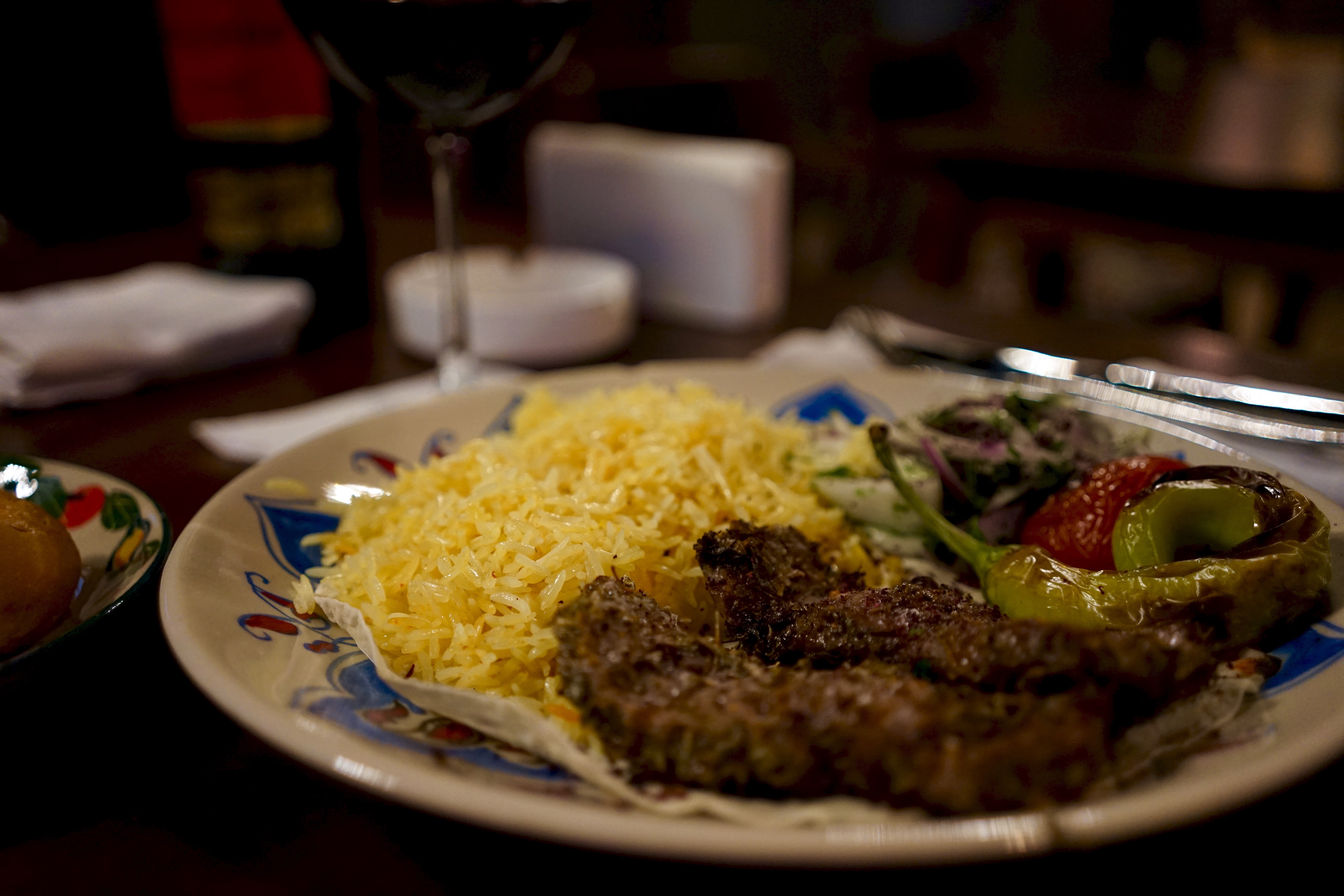
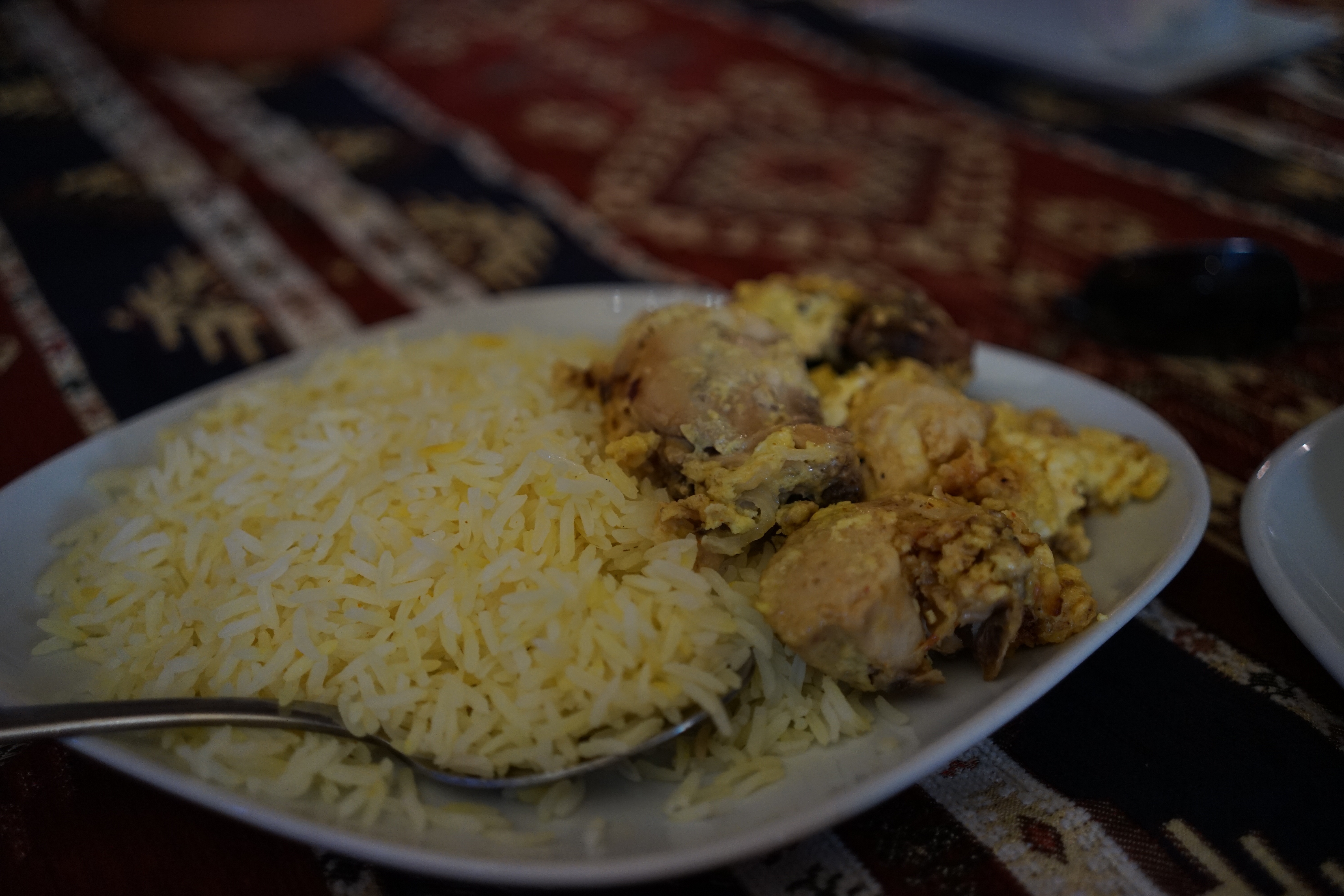
Shashlyk – Kebabs and Grills
No culinary journey would be complete if you didn’t try shashlyk. The word has Turkic roots (shashlik). Shashlyk is an explosion of flavours mixed with meat that is placed on a skewed and barbecued over open flames. During the warm summer months, Azerbaijani’s can be found gathering around food and shashlyk would be one of the main stars of the show (along with the plov. of course). The most traditional shashlyk is made with lamb. However, other meats are also commonly used – beef, and chicken. The meat is marinated with a blend of herbs, spices, and sometimes yogurt. The meat is then skewered and grilled over an open flame, imparting a smoky, charred taste. It is popular to serve this with a local type of flatbread, called lavash as well as grilled vegetables and fresh salads.
Dushbere – Azerbaijani Dumpling Soup
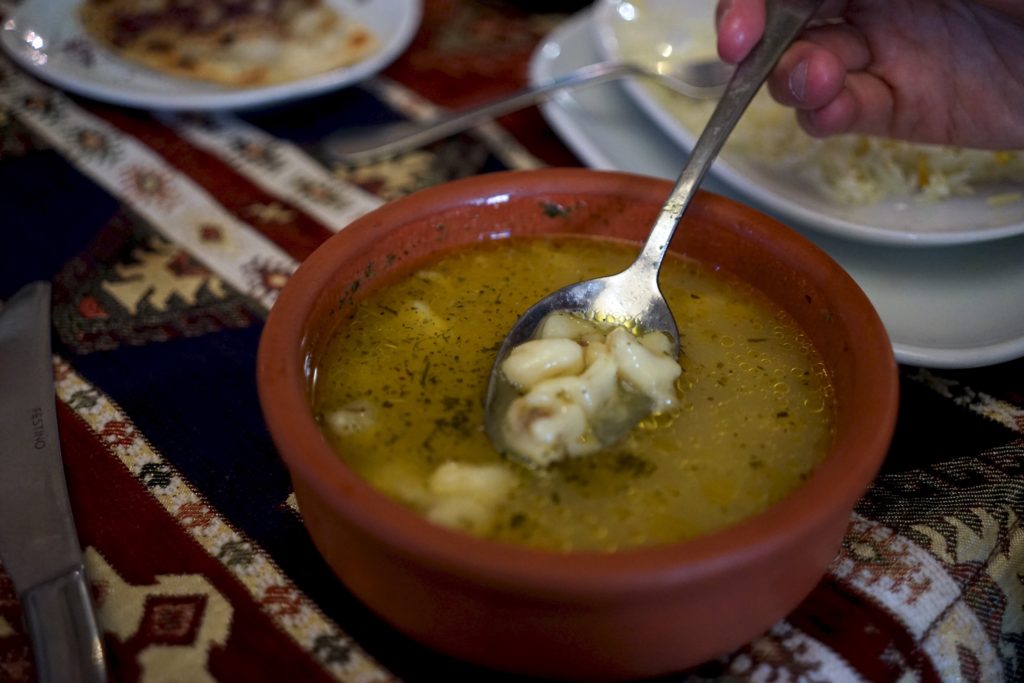
While it is composed of simple ingredients, this dumpling is extremely flavourful! Traditionally, it is made with lamb or beef, similar to majority of the other dishes on this list. The dumplings are first prepared with the meat filling folded into tiny parcels while the rich broth is made. It is a lamb or beef based broth that’s left to simmer for a long time to bring out the flavours. It is then strained through a cheesecloth to have a rich, flavourful, semi cloudy broth. The dumplings are then cooked in this broth prior to serving.
Three Baji (Sisters) Dolma:
Dolma means stuffed in Turkish and historically seems to be a dish created during the Ottoman Empire. It also means stuffed in Azeri.
This is probably what I would file under simple but perfect. Looking at the ingredients, it’s pretty basic – tomatoes, capsicum and eggplants stuffed with ground meat. The combination of these ingredients creates a perfect harmony of flavours that marry together wonderfully.
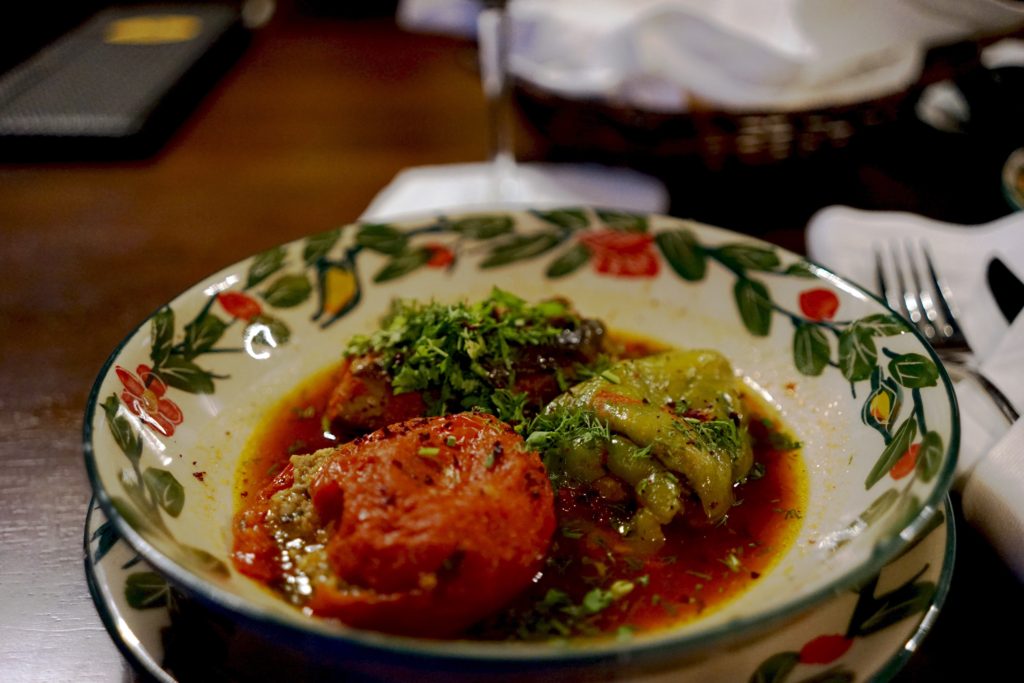
To create this dish, you would hollow out the tomato, capsicum and eggplant. This is then mixed with mince (lamb or beef are most commonly used), spices, herbs and rice. Once your vegetables are packed with this filling, it is placed in a pan with a rich, flavourful liquid and left to slow cook. This dish is so hearty and delicious. You will be wanting this every day!
While the Three Sister Dolma is extremely popular, it is not the only dolma you will find! While I was there, we also tried the cabbaged and wine-leaf stuffed dolma. These are similar to dolmas found in Eastern Europe and Greece respectively. However they are slightly different. The difference lies in the filling.
Saj
At one of the restaurants we visited, I had the opportunity to try Saj. It is a dish that is cooked in a semi shallow, round pan over an open flame, featuring a variety of vegetables – onions, different types of peppers, tomatoes sauteed. Often served with a type of meat; lamb, beef, chicken or white fish. While you would traditionally cook on this yourself, at the restaurant, it came out partially cooked and you could easily finish off the cooking at your table.
Azerbaijani Stuffed Flatbread
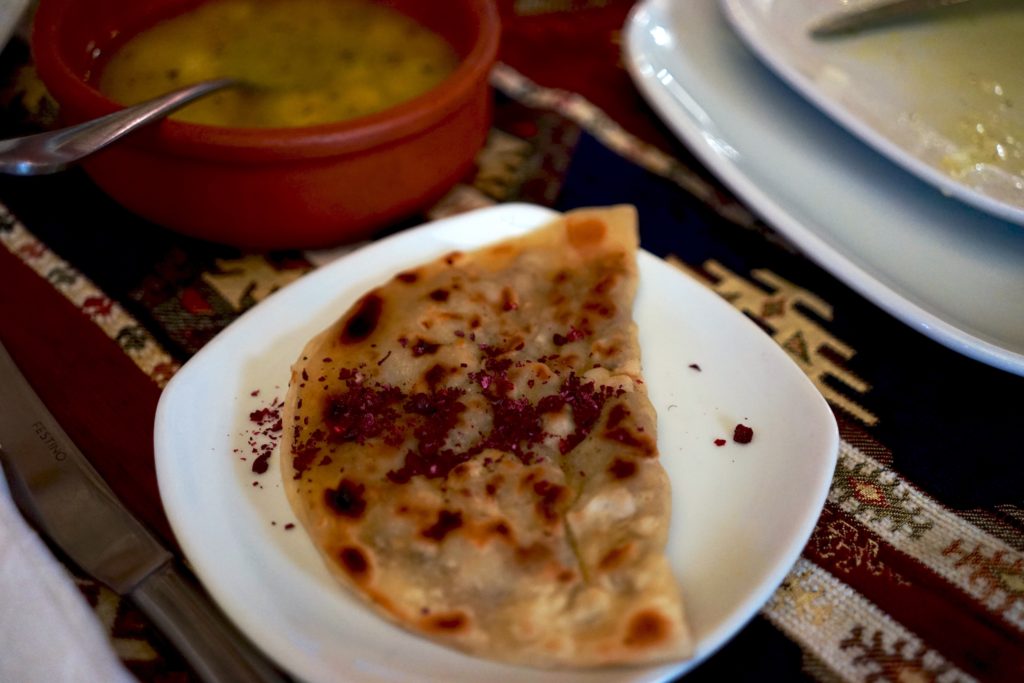
Qutab is made by creating a stiff dough from flour, water, eggs, and salt. The dough is rolled into a thin circular layer and the middle of each circle filled with stuffing before finally being folded into a crescent shape. The resulting patties are griddled on both sides and served by pouring over butter on top.
Traditional Sweets and Pastries
Pakhlava
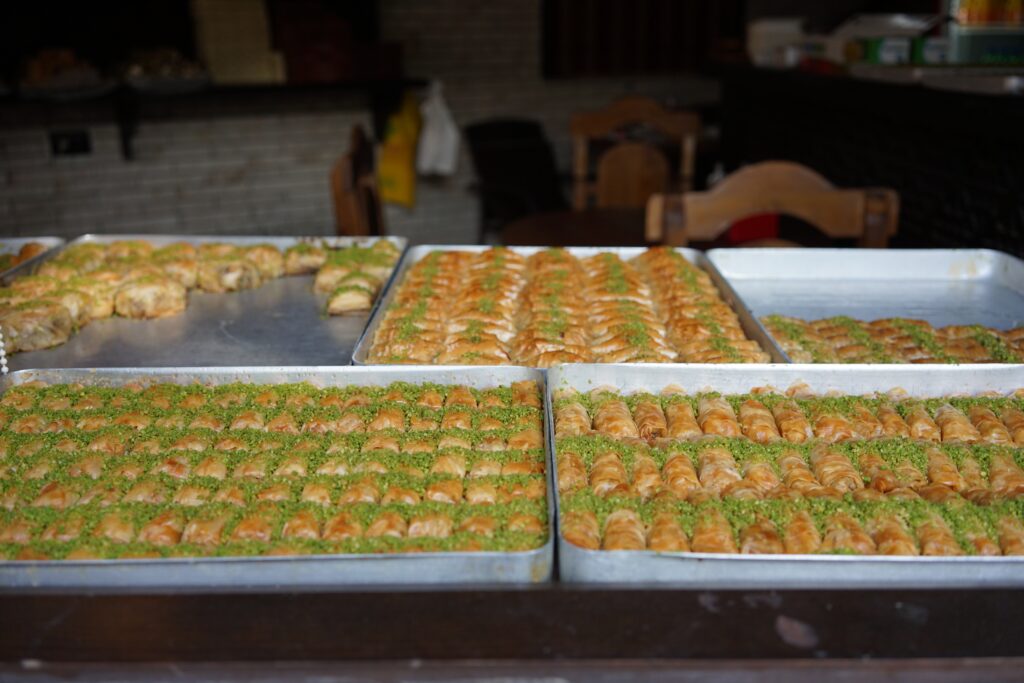
Azerbaijani desserts are a great way to end any meal. Now that you’ve enjoyed a culture through their main meals of the day, it’s now time to see how they treat a sweet tooth! The classic is pakhlava, similar to baklava. This is a layered pastry filled with nuts and sweetened with honey or syrup. With the layers of puff pastry, it’s a blend of crunchy and sweet. An obvious favourite during festive occasions or even at tea time. Desserts are integral to Azerbaijani hospitality and celebrations. They often feature intricate designs and are made with great care, reflecting the importance of tradition and family in Azerbaijani culture. Indulging in these sweets offers a perfect, flavorful conclusion to your culinary journey through Azerbaijan.
Shorgoghal
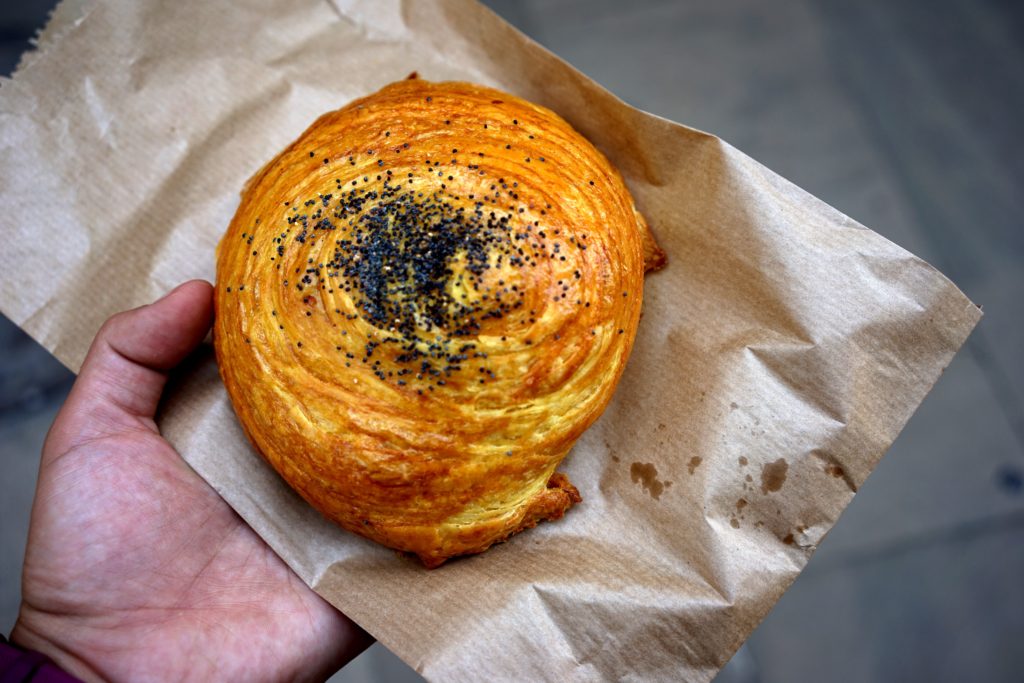
This soft pastry was cripsy and flakey with different layers of puff pastry. It is filled with a salty, spiced filling – anise, cumin or fennel seeds. While this is usually eaten during Nowruz (Persian New Years), you can easily find it at several bakeries lining the Old Town of Baku. It was a perfect snack to enjoy while sightseeing between all the olden architecture and historical sights. Also, it is quite a common snack to have while stopping at a local teahouse as they both perfectly balance out.
Tea Time: Azerbaijan’s Rituals and Delicacies

The tea culture in Azerbaijan is more than just a break. It is part of a ritual that embodies the country’s hospitality and social culture. Azerbaijani tea is bright colour and served in pear shaped glasses called armudu. Armudu are designed in such a way that it keeps the tea warmer while being comfortable to hold. However, we weren’t too used to it so it was a bit warmer to the touch than we were accustomed to. The tea that is usually black tea but they do make herbal tea with foraged wild herds. The tea is often accompanied by lumps of sugar rather than refined sugar. One common practice is to dip a sugar cube into the tea, take a small bite, and then sip the tea through the sugar, enhancing its flavor. Ours was also served with slices of lemon.
There are plenty of tea houses, chaykhana, scattered around the Old Town. We visited Khamsa Tea House to enjoy a little baklava snack and tea. Located underground, the tea house is beautifully decorated with ottomans and rugs, giving it an old timey feel.
Alcohol in Azerbaijan?
While Islam is the predominant religion in Azerbaijan, it is often considered the most secular. I was expecting it to be a relatively dry country but alcohol was easily and readily available! They usually import the brews from neighbouring Russia like the one below – Stary Melnik from Barrel, which is a lager type old Russian beer. The local brew is Xirdalan beer which is the number one beer in the country due to it’s high quality. It is brewed in country under the Carlsberg umbrella group. This too is a classic lager styled brew.
Apart from beers, Azerbaijan has a rich wine culture. We sampled a couple of glasses of the locally produced wine and I will say, they are really nice! Although, it can be a little challenging to try find a bottle of Azerbaijani wine as they are usually marketed towards the Russian and Eastern European markets. A definitely must try if you’re partial to a glass of wine!
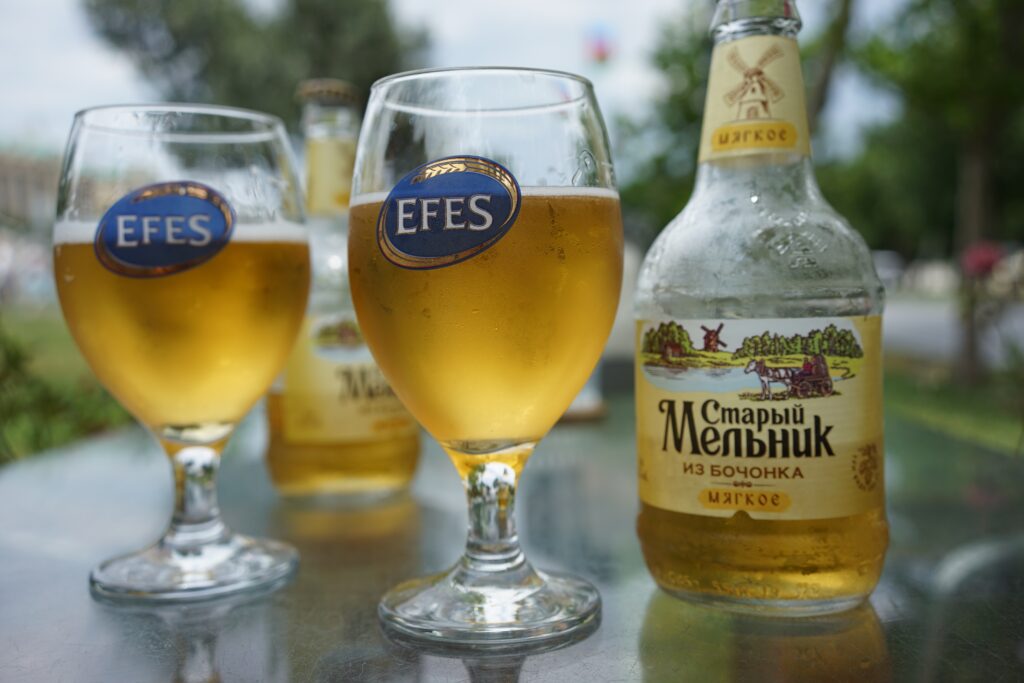
![]()
The Foodie’s Checklist: Must-Try Azerbaijani Dishes
This checklist ensures a well-rounded and unforgettable gastronomic journey through Azerbaijan.
- Plov – a rice dish served with meat + vegetables. Some may be served with dried fruits.
- Dolma – stuffed vegetables. 3 Sister Dolma variation is minced meat stuffed in tomatoes, peppers and eggplants.
- Dushbere – dumplings served in a clear vegetable broth with some minced meat.
- Saj – shallow pan of vegetables, meats cooked at the table
- Lavash – Azerbaijani flatbread
- Shashlyk – meat cooked on skewers over open coal
- Qutab – flatbread filled with mince, cheeses or spinach.
- Chay – tea
- Pakhlava – a puff pastry dessert similar to baklava.
Hungry? Save this for later!
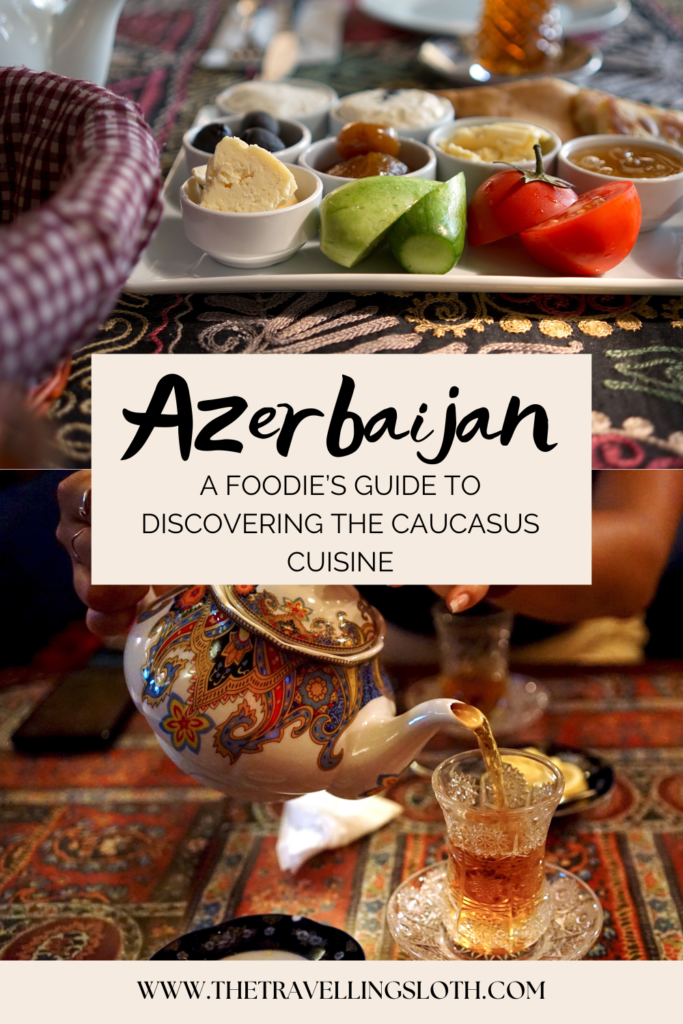
For the Gastronomic Adventurer
This concludes our journey through Azerbaijan’s cuisine. While this is a whirlwind through a sample of dishes this country offers, there’s plenty of other must-try dishes. Don’t hesitate asking the locals for recommendations and try some of their personal favourite dishes. When dining out, keep a look out for any daily specials are these are the dishes the chef gets a chance to show off their expertise when it comes to local flavours! Azerbaijan, a melting pot of cultures in the Caucasus region. I always found that you experience a country through their food. As it was part of the Silk Road trade route. you can expect their dishes to have some influence from the far east, mixed in with western. You definitely are in for a treat!


Leave a Reply